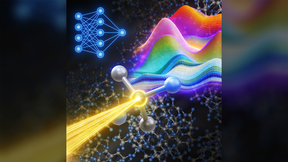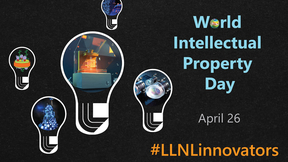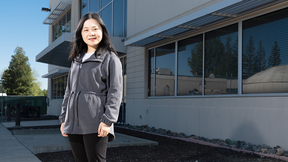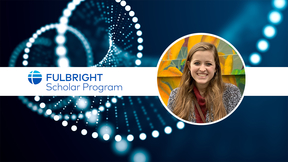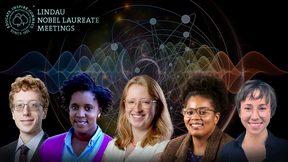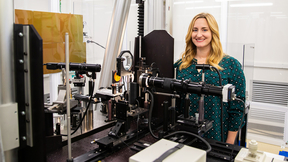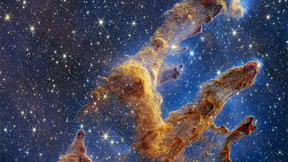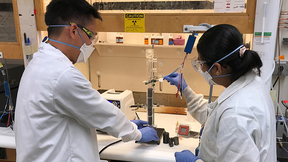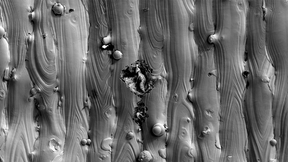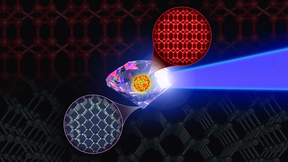Back
Materials Science
Zebra stripes of material interfaces
Pattern formation and self-assembly are fundamental to many natural and technological phenomena spanning various fields of science—from physics and biology to chemistry and materials science. These processes involve the emergence of organized periodic structures in systems due to interactions at different scales. Oftentimes, very simple interactions can lead to complex and…
Unravelling the chemistry of heavy elements
Molecular compounds with heavy elements, like americium, curium and others can now be synthesized in a streamlined and efficient way thanks to a new technique developed by Lawrence Livermore National Laboratory (LLNL) researchers. The new pathway can help scientists perform serial chemistry with radioactive elements and could be used to speed up R&D for nuclear waste…
Nano-confinement may be key to improving hydrogen production
Researchers at Lawrence Livermore National Laboratory (LLNL) have discovered a new mechanism that can boost the efficiency of hydrogen production through water splitting. This research, published in ACS Applied Materials & Interfaces, was featured on the journal cover and provides new insights into the behavior of water reactivity and proton transfer under extreme…
Lawrence Livermore celebrates employees with 50-plus years of service
Lawrence Livermore National Laboratory (LLNL) recently honored a unique cohort of Laboratory employees: those who have worked at the Lab for more than 50 years, including those who will reach this milestone by the end of the year. The first-of-its-kind ceremony recognized the group’s incredible contributions over decades of commitment to the Lab’s missions. “It is amazing…
LLNL honors 23 as Distinguished Members of Technical Staff
Twenty-three LLNL researchers have been named Distinguished Members of Technical Staff (DMTS) for their extraordinary scientific and technical contributions, as acknowledged by their professional peers and the broader scientific community. As distinguished citizens of the Laboratory and their scientific areas of specialization, DMTS honorees have a sustained history of…
Designing magnets with tunable properties using deep ensembles
Perovskite oxides are gaining significant attention for use in next-generation magnetic and ferroelectric devices due to their exceptional charge transport properties and the opportunity to tune the charge, spin, lattice, and orbital degrees of freedom. Interfaces between perovskite oxides exhibit unconventional magnetic exchange switching behavior, offering a pathway for…
LLNL researchers develop framework for databasing properties of crystal defects
Point defects (e.g. missing, extra or swapped atoms) in crystalline materials often determine the actual electronic and optical response of a given material. For example, controlled substitutions in semiconductors like silicon are the backbone of modern technology. Despite their importance, point defects are notoriously difficult to simulate and characterize, particularly…
Manufacturing optimized designs for high explosives
When materials are subjected to extreme environments, they face the risk of mixing together. This mixing may result in hydrodynamic instabilities, yielding undesirable side effects. Such instabilities present a grand challenge across multiple disciplines, especially in astrophysics, combustion and shaped charges — a device used to focus the energy of a detonating explosive…
Accelerating material characterization: Machine learning meets X-ray absorption spectroscopy
Lawrence Livermore National Laboratory (LLNL) scientists have developed a new approach that can rapidly predict the structure and chemical composition of heterogeneous materials. In a new study in ACS Chemistry of Materials, LLNL scientists Wonseok Jeong and Tuan Anh Pham developed a new approach that combines machine learning with X-ray absorption spectroscopy (XANES) to…
Lab scientist wins DOE Howes Scholar award for work in computational science
Lawrence Livermore National Laboratory (LLNL) postdoc Kyle Bushick has garnered the 2024 Frederick A. Howes Scholar award for technical excellence, leadership and character in his innovative use of atomistic simulations to understand quantum processes and as a champion of inclusivity and community building. “Learning I was selected as a Howes Scholar was an enormous honor…
Meet LLNL: polymer chemist Johanna Schwartz
As a Jewish American, Johanna Schwartz believes she’s benefited from others’ mitzvah through mentorship, being included in team settings and receiving support when navigating life and career-path decisions. In Hebrew, mitzvah translates to commandment, but is generally understood as “a good deed,” or conscious acts of empathy and kindness. These decisions led her to…
Celebrating LLNL researchers on World Intellectual Property Day
World Intellectual Property (IP) Day is Friday, April 26. World IP Day shines a light on the important role innovation plays in achieving the United Nations’ (UN) 17 Sustainable Development Goals (SDGs), which aim to create a better future for everyone by protecting the planet. Lawrence Livermore National Laboratory’s (LLNL)’s Innovation and Partnerships Office (IPO) is…
Going with the flow: research dives into electrodes on energy storage batteries
As a grid-scale energy storage system, flow batteries have gained increasing attention as a means to address the challenges associated with fluctuations and intermittency in renewable energy sources. Vanadium redox flow batteries (VRFBs) have emerged as promising solutions for stationary grid energy storage due to their high efficiency, scalability, safety, near room…
LLNL’s Kate Elder honored with Fulbright foreign scholarship
Lawrence Livermore National Laboratory (LLNL) materials scientist Kate Elder has been selected as a Fulbright U.S. Scholar and will conduct research in Finland. Elder’s project, “Establishing Process-Structure Links During Additive Manufacturing of High Entropy Alloys,” will lead to the manufacture of lighter and stronger parts, perfect for high-temperature applications…
Five Lab postdocs will attend 73rd annual Lindau Nobel Laureate meetings
Getting the chance to meet and mingle with scientists who have achieved Nobel Prize winning greatness will be the reality for five Lawrence Livermore National Laboratory (LLNL) postdoctoral appointees selected to attend the 73rd annual Lindau Nobel Laureate meetings. Tina Ebert, Elizabeth Grace and Raspberry Simpson were selected as the 2024 LLNL cohort; Tomi Akindele and…
Throwing shade on optics damage
If the sun is too bright, you might don a pair of sunglasses or a hat to prevent glare from damaging your eyes. Researchers at Lawrence Livermore National Laboratory (LLNL) are using this same strategy to mitigate damage to valuable optics vital to the National Ignition Facility (NIF). Every time NIF fires, its lasers can harm the optics along its beamlines, causing…
Using NIF to study the sluggish pace of star formation
Editor’s note: The principal mission of Lawrence Livermore National Laboratory (LLNL)’s National Ignition Facility (NIF) is to support the National Nuclear Security Administration’s science-based Stockpile Stewardship Program — and with the achievement of fusion ignition in 2022 at NIF, LLNL is further exploring the possible use of nuclear fusion as a future energy source…
New technique converts excess renewable energy to natural gas
Four Lawrence Livermore National Laboratory (LLNL) researchers have partnered with Los Angeles-based SoCalGas and Munich, Germany-based Electrochaea to develop an electrobioreactor to allow excess renewable electricity from wind and solar sources to be stored in chemical bonds as renewable natural gas. When renewable electricity supply exceeds demand, electric-utility…
LLNL researchers uncover culprits behind pitting corrosion in 3D-printed stainless steel
Like a hidden enemy, pitting corrosion attacks metal surfaces, making it difficult to detect and control. This type of corrosion, primarily caused by prolonged contact with seawater in nature, is especially problematic for naval vessels. In a recent paper published in Nature Communications, Lawrence Livermore National Laboratory (LLNL) scientists delved into the mysterious…
Supercomputer simulations of super-diamond suggest a path to its creation
Diamond is the strongest material known. However, another form of carbon has been predicted to be even tougher than diamond. The challenge is how to create it on Earth. The eight-atom body-centered cubic (BC8) crystal is a distinct carbon phase: not diamond, but very similar. BC8 is predicted to be a stronger material, exhibiting a 30% greater resistance to compression…










